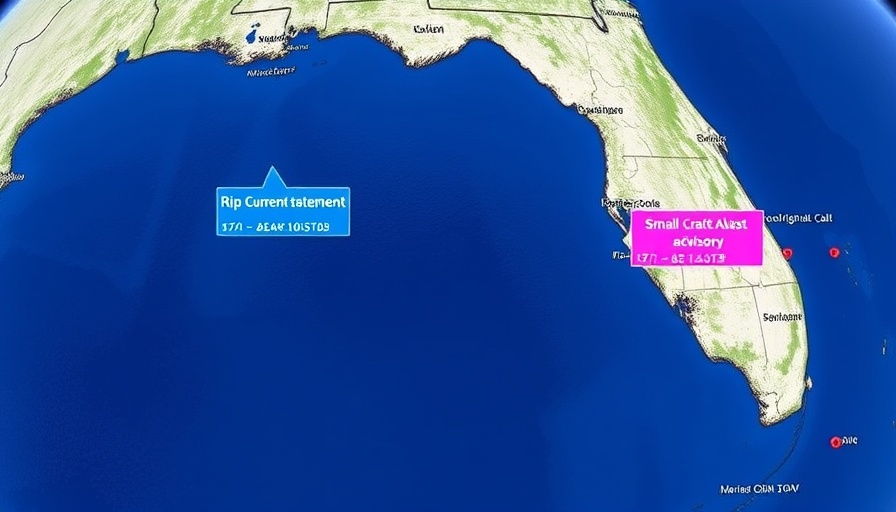
Hurricane Erin: A Major Threat to Florida Beaches
This week, Florida’s Atlantic coast is bracing for the impact of Hurricane Erin, which has rapidly intensified into a powerful category 5 hurricane, boasting winds of up to 160 miles per hour. As Erin approaches the coast, it is essential for residents and visitors to be aware of the life-threatening conditions that are expected to unfold.
Understanding Rip Currents and Their Dangers
One of the primary concerns as Hurricane Erin churns through the waters is the increase in rip current risks. The east coast, from Boca Raton to Georgia, has already seen hazardous rip currents. These currents can deceptively pull even the strongest swimmers away from shore, making it crucial for beachgoers to stay vigilant. The best escape plan? If caught in a rip current, swim parallel to the beach to safely find your way back to safety.
Weather Conditions: What to Expect
Starting Tuesday, swimmers will likely face increased wave action with surf heights reaching between 5-8 feet, creating tough conditions on the water. Sailors and small craft operators are advised to heed small craft advisories, as conditions can become dangerous with waves potentially reaching up to 14 feet further out.
Protecting Florida’s Beaches: Erosion Concerns
Alongside the threat to swimmers, moderate beach erosion is also a significant concern as Hurricane Erin advances. The powerful surf can wear away dunes and beaches, impacting the coastline that families and wildlife rely on. The erosion could last beyond the storm, making it critical for local authorities to monitor and mitigate these impacts.
Future Outlook: After Erin
As Erin moves northward, it is expected that rip current risks will diminish by Friday, but long-term monitoring of beach conditions will remain necessary. Residents are encouraged to stay updated through local news resources and weather apps to ensure safe practices while the storm system is active.
Ultimately, Hurricane Erin serves as a stark reminder of the power of nature and the importance of preparedness during hurricane season. Whether you’re a local Floridian or a visitor, understanding these risks is crucial for a safe beach experience this week.
 Add Row
Add Row  Add
Add 



Write A Comment